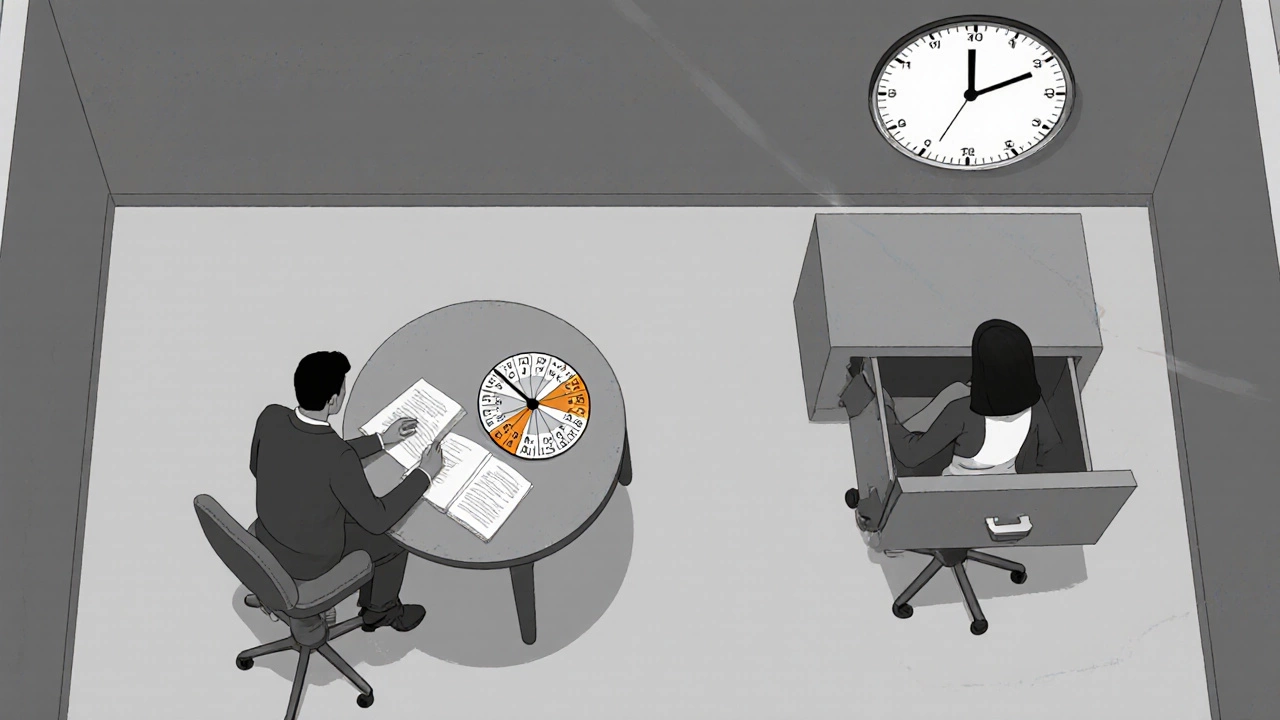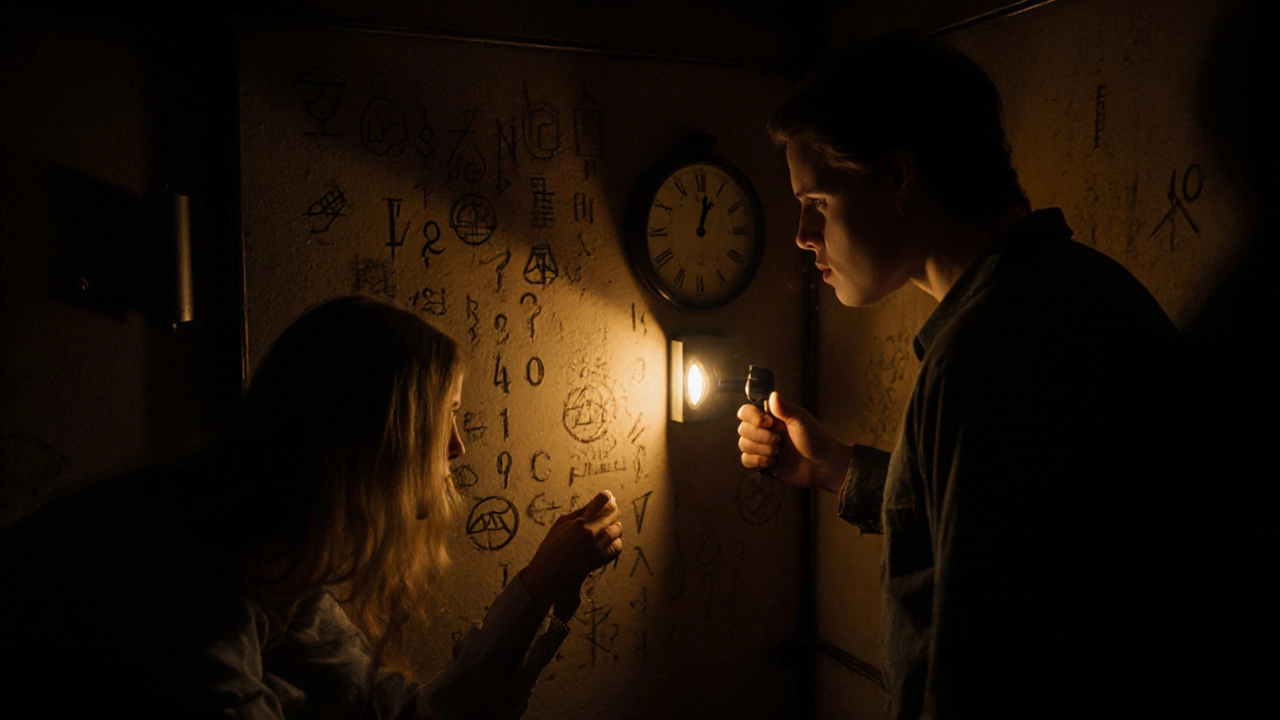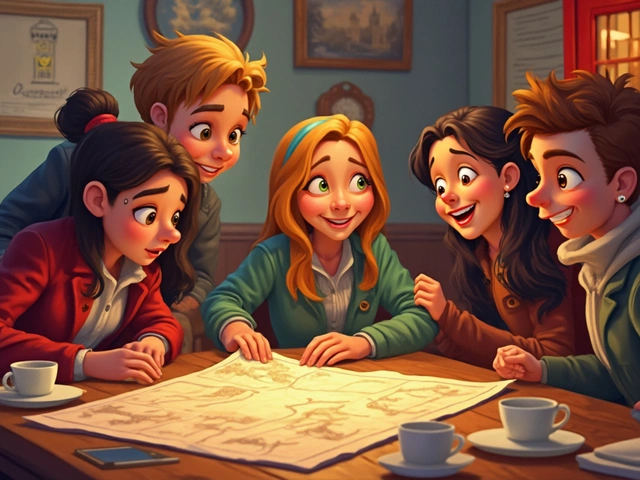Escape Room Suitability Calculator
Room Assessment
Your Escape Room Assessment
Key Recommendations
Most escape rooms are designed for groups of 4 to 6 people. So when you and a friend show up with just the two of you, you’re not just walking into a puzzle - you’re walking into a challenge most rooms weren’t built for. But here’s the truth: two people can beat an escape room. Not every time. Not every room. But plenty of them - if you know how to play smart.
Why Two People Is Harder (But Not Impossible)
Escape rooms rely on division of labor. One person finds a clue, another deciphers it, a third checks a locked box, and someone else keeps track of time. With four people, that’s natural. With two? You’re trying to do four jobs at once. You’ll miss things. You’ll step on each other’s toes. You’ll stare at the same bookshelf for ten minutes thinking you’re the only one who saw it. But here’s what most teams don’t realize: fewer people means less noise. No one’s shouting random guesses. No one’s hogging the flashlight. No one’s ignoring the puzzle because they’re busy texting. Two people force focus. That’s an advantage - if you use it.What Makes a Room Beatable by Two?
Not all escape rooms are created equal. Some are built for crowds. Others? They’re built for pairs. The best rooms for two people share a few traits:- They have one main puzzle path - not five branching ones
- Clues are visual, not audio-heavy (you can’t both listen to a recording at once)
- Locks are spaced out - no 10 locks in one closet
- They don’t rely on physical teamwork (like lifting heavy objects or holding two switches at once)
How to Play as a Team of Two
You’re not just two people in a room. You’re a single brain split into two bodies. Here’s how to make that work:- Split the room in half - but stay in sight. One person takes the left side, the other the right. Don’t wander into the back corner and disappear. Keep visual contact. If one person finds a clue, they shout "I’ve got something!" - not "Look at this!" - so the other knows to stop and listen.
- Communicate in fragments. Don’t say, "I think the key might be hidden in the bookshelf because the third book is loose and the numbers on the wall match the ISBN." Say: "Bookshelf. Third book loose. Numbers match." Short. Clear. No fluff.
- One person solves, the other verifies. If you find a code, don’t just try it. Have your partner check the clue again. Two eyes catch what one misses. That’s your safety net.
- Time check every 5 minutes. Don’t wait for the game master to remind you. Say: "We’ve got 20 left. What’s our next move?" It forces you to pause, reset, and choose the next step - not just keep fiddling with the same puzzle.
- Abandon the dead end. If you’ve spent 8 minutes on a locked drawer and nothing’s happened, say "Move on." Don’t get obsessed. The next clue might be right beside it.

What to Avoid at All Costs
There are three mistakes two-person teams make every single time:- Trying to solve everything together. If you both stare at the same puzzle, you’re wasting time. Split up. Even if you’re not sure what you’re looking for, moving means you’ll find something.
- Assuming your partner saw what you saw. You found a symbol on the wall? Say it out loud. Your partner didn’t notice it. They’re not dumb - they’re just looking at the floor.
- Not using the hint system. Hints aren’t cheating. They’re oxygen. If you’re stuck for more than 3 minutes, ask for help. Rooms designed for two usually give easier hints - they expect you to need them.
Real Examples: Rooms That Two People Have Beaten
In Auckland, Exit Game’s "The Alchemist’s Lab" has been completed by two people in 47 minutes - under the 60-minute limit. How? They split the room. One focused on the chemical symbols on the shelves. The other found the hidden compartment behind the clock. They didn’t talk much. They just moved fast. When one found a key, they handed it over. No explanation needed. They trusted each other’s eyes. In Christchurch, Locked In’s "Museum Heist" has a 38% success rate for two-person teams - higher than for groups of five. Why? The puzzles are linear. One clue leads to the next. No parallel paths. No distractions. Just a story you follow, step by step. These aren’t flukes. They’re proof that structure matters more than size.
When Two People Should Skip the Room
Some rooms are just not meant for duos. Avoid these:- Rooms with "physical challenges" - lifting weights, pulling levers, crawling through tunnels
- Rooms with "multiple simultaneous puzzles" - like three locks that all need solving at once
- Rooms labeled "Best for 4-6" - if the website says it, they mean it
- Themed rooms with heavy audio cues - like a haunted house with whispers you can’t both hear
Why You Should Try It Anyway
There’s something powerful about beating an escape room with just one other person. It’s not just about winning. It’s about trust. About silence. About knowing when to speak and when to let your partner think. You learn how they think. You learn how you think under pressure. I’ve seen couples finish a room and walk out without saying a word - then burst out laughing. I’ve seen friends who barely talked before the game leave with plans to do another one next weekend. Escape rooms aren’t about how many people you bring. They’re about how well you work together. Two people can do it. Not every room. But enough of them - if you play smart, stay calm, and trust each other.Next time you’re thinking of trying an escape room with just your partner, your sibling, or your best friend - don’t overthink it. Book it. Walk in. And remember: you’re not underdog. You’re a team with one advantage they don’t have - total focus.
Can two people really beat an escape room?
Yes, two people can beat an escape room - but only if the room is designed for small groups. Rooms with linear puzzles, clear clues, and no physical challenges are the most beatable. Avoid rooms labeled "Best for 4-6" or those with multiple simultaneous tasks.
What’s the best strategy for two people in an escape room?
Split the room in half and stay in sight. Communicate in short, clear phrases. One person solves while the other verifies. Check time every 5 minutes. If stuck for more than 3 minutes, ask for a hint. Don’t get stuck on one puzzle - move on and come back later.
Are escape rooms harder for two people?
Yes, but not because two people are worse - it’s because most rooms are built for 4-6. Fewer people means less division of labor. But it also means less distraction. Success comes down to communication and focus, not team size.
Should we ask for hints if we’re stuck?
Absolutely. Hints aren’t a sign of failure - they’re part of the game. Teams of two often need them more than larger groups. Waiting too long to ask wastes time. Most venues offer gentle hints for small teams.
Which escape rooms are best for two players?
Look for rooms labeled "Perfect for 2" or "Duo-Friendly". Rooms with journal-based puzzles, code wheels, hidden symbols, and linear storylines work best. Avoid rooms with physical challenges, multiple locks, or audio-heavy themes. Call the venue and ask - most will recommend the right one.





